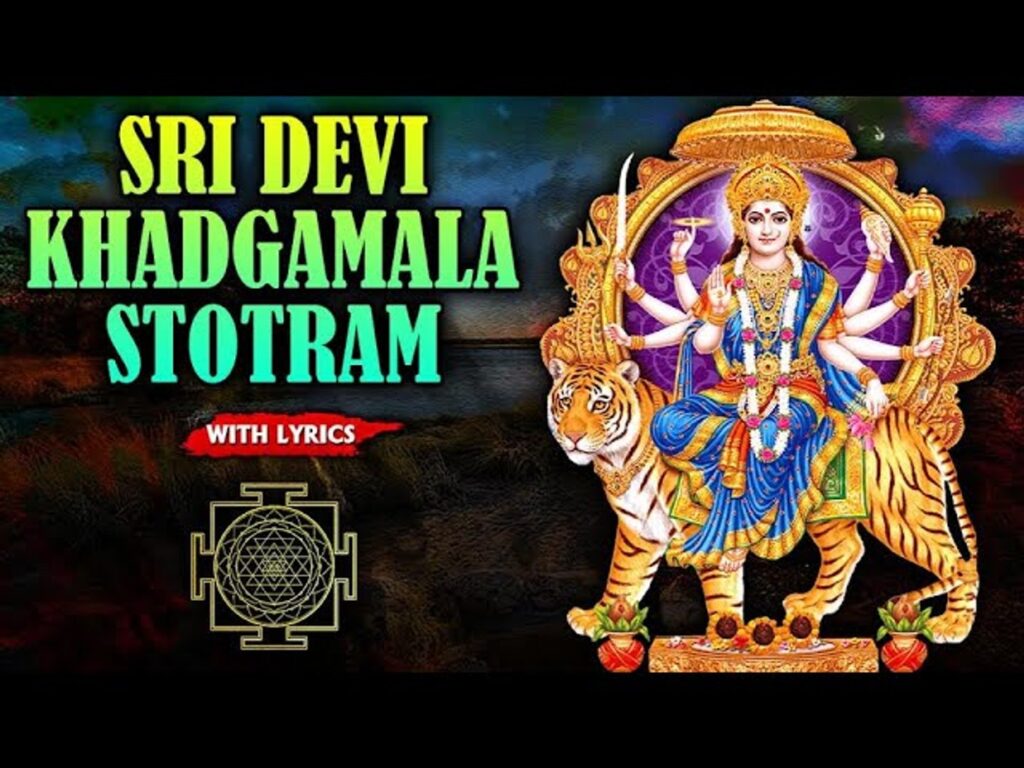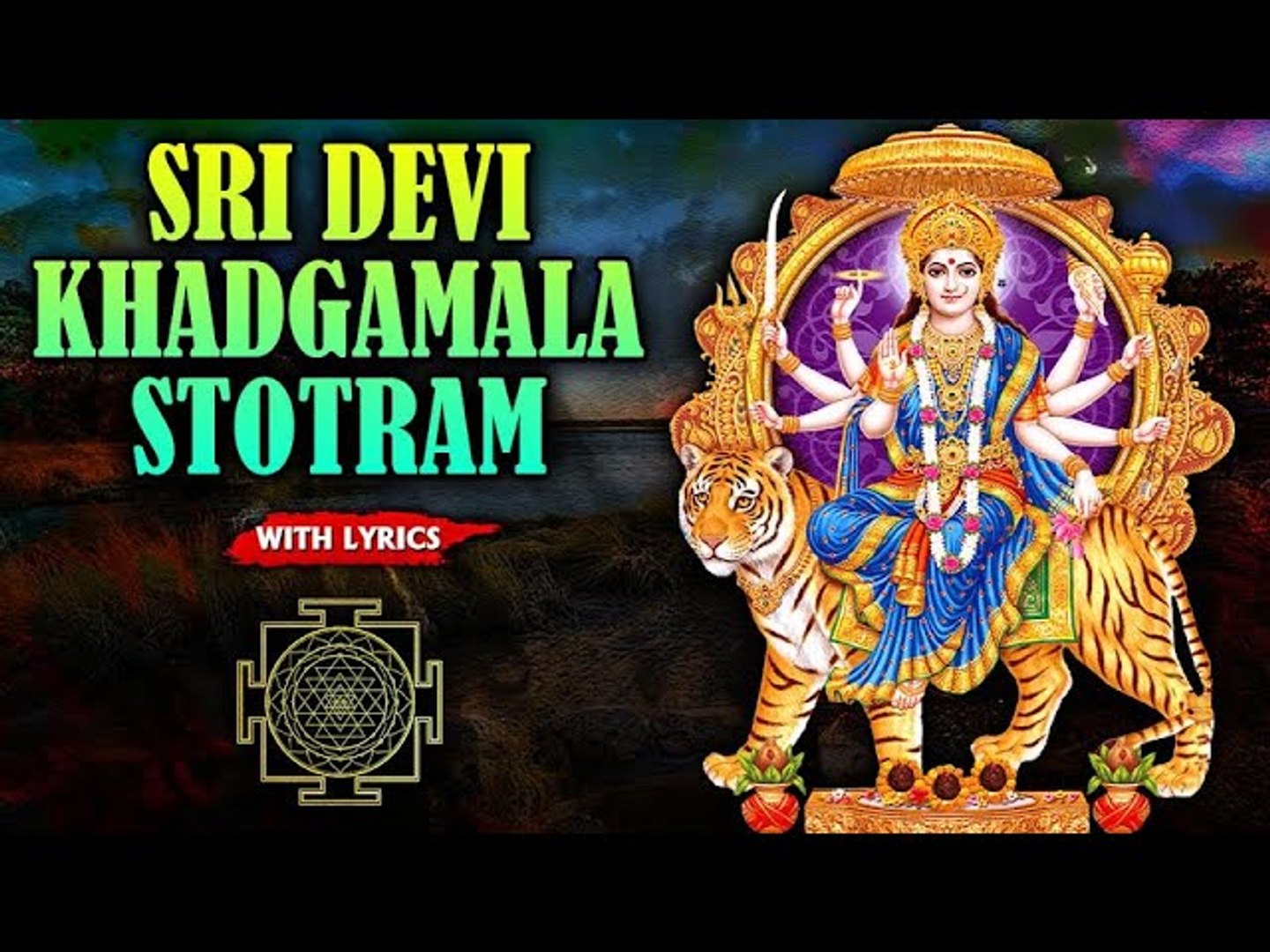
🕉️ What is Khadgamala Stotram?
Khadgamala (literally “Garland of the Sword”) is a powerful Tantric devotional hymn in praise of Devi Tripurasundari—the supreme Goddess in Śrīvidyā tradition. Its verses, arranged like a garland, invoke successive divine energies aligned with the levels of the Śrī Yantra—or Mahā Meru—each name representing a deity or Shakti along that cosmic structure
📜 Origins & Structure
- Source Tradition: It’s rooted in the Vāmakeśvara Tantra and Śrīvidyā lineage
- Composition: Includes the prārthanā (invocation), viniyoga (purpose invocation), dhyāna (meditative verse), and the flow of names aligning with Śrī Yantra’s nine layers .
- Symbolism: “Khadga” symbolizes the Devi’s power to cut through illusion, desire, and negativity, while “mala” suggests a chain of progressive empowerment
🙏 Acknowledgements & Credit
We sincerely thank Nanduri Srinivas Garu for sharing the PDF and contributing to the service of Sanatana Dharma. Your support is deeply appreciated.
Credit: Nanduri Srinivas Garu
https://youtu.be/NGgs4k4o3Ek?si=m7oi7f50-ItCVcUW
✨ Benefits & Spiritual Effects
- Protection: Chanting forms an invisible armor against psychic and negative influences
- Spiritual Growth: Awakens inner spiritual energy (Kundalini) and sharpens awareness by aligning with divine universal forces .
- Destruction of Obstacles: Removes fears, karmic blocks, and subconscious impurities
- Inner Strength: Cultivates devotion, mental resilience, and the strength to face worldly challenges
🔊 How to Recite
- Preparation: Sit facing east or a sacred image/Yantra of Tripurasundari. Light a lamp or incense
- Invocation (Prārthanā): CopyEdit
ह्रीङ्कारासनगर्भितानलशिखां सौः क्लीं कलां बिभ्रतीं …— A vivid invocation of Devi’s form, complete with weapons, ornaments, and cosmic attributes . - Viniyoga: Declaration of intent and spiritual efficacy—chants the mukhya bija-mantra “ऐं, क्लिं, सौः” with Śaḍāṅga nyāsa (placing of six seed syllables)
- Dhyāna: Meditative posture and visualization of Devi and her entourage, guided by a descriptive Sanskrit verse .
- Chanting: Recite the sequence of names aligned with the Śrī Yantra’s layers—many conclude with Tripurasundari at the core
🗓️ When to Practice
- Ideal Times: Mornings, Fridays, Navashtami, and during Navaratri
- Duration: Practiced daily, or in cycles of 21 or 41 days (āvaraṇas), depending on one’s sādhanā
📖 Excerpt from the Dhyāna Verse
“आरक्ताभां त्रिणेत्रामरुणिमवसनां रत्नताटङ्करम्यां … ध्यायेदम्भोरुहस्थामरुणिमवसनामीश्वरीमीश्वराणाम्”
Describes Devi with red hue, three eyes, jewels, weapons like sword, noose, and bow—meditated upon in samādhi
🧘 Deepen Your Practice
- Use a Śrī Yantra visual guide and audio recordings to perfect pronunciation and rhythm
- Advanced practitioners often integrate mudrā, bija-mantra, and tantra-based rituals.
✅ Summary Table
| Feature | Details |
|---|---|
| Purpose | Protection, inner purification, spiritual empowerment |
| Textual Source | Vāmakeśvara Tantra, Śrī Vidyā tradition |
| Core Elements | Prārthanā, Viniyoga, Dhyāna, Name recitation |
| Practice | Daily/ritual, ideal during Shakti festivals |
| Effect | Obstacle removal, shield of divine protection, activation of spiritual energy |
📢 Follow Us For More Updates
Varahi Navaratri Pooja PDF Download | Powerful Varahi Stotram for Navaratri
🔔 YouTube Channels:
👉 Trendy VS Vlogs
👉 VS Coding Academy
📱 Join Our WhatsApp Channel for the latest job opportunities and updates:
👉 VS_CODING_ACADEMY WhatsApp Channel
